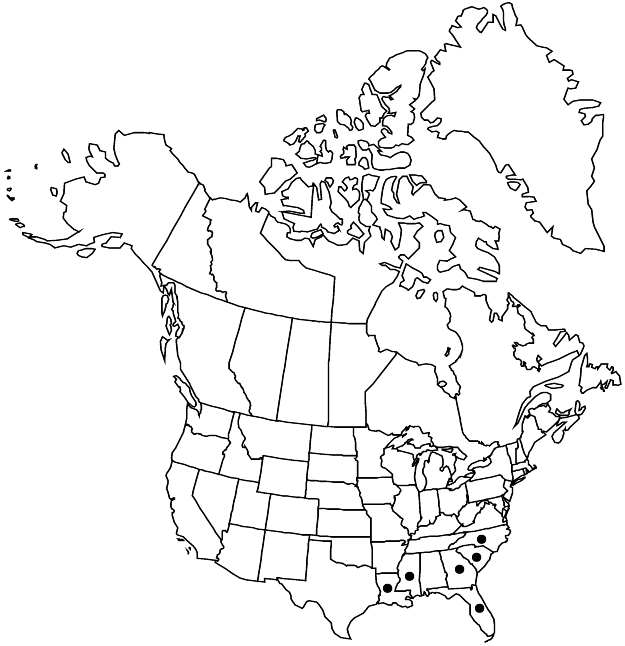Clethra tomentosa
in J. Lamarck et al., Encycl. 2: 46. 1786,.
Shrubs 1–2 m. Stems ± terete; young shoots woolly-tomentose. Leaves: petiole 0.5–1(–1.5) cm; blade obovate (widest distal to midpoint), 6–9(–11) × 3–4(–5) cm, base cuneate to rounded, margins obscurely to clearly toothed, especially distally (proximalmost tooth averaging 3.4 cm distal to base), apex obtuse to subacute, surfaces woolly-tomentose abaxially, with sparse, short-stellate hairs adaxially, especially when young. Inflorescences in clusters of 2–4, (8–)10–16(–19) cm, axis densely stellate-hairy. Pedicels 2–3.5 mm, proximalmost averaging 2.9 mm, hairy; bract shorter than flower, proximalmost 4–6 mm, stellate-hairy. Flowers: sepals 3.5–5 × 1–1.5 mm, stellate-hairy; petals white, 5–8 × 4–5 mm; filaments 4–6 × 0.4–0.5(–0.7) mm, glabrous; anthers ca. 1.5 mm; style 3.5–5 mm, downy, hairs simple. Capsules subglobose, 2.5–4 × 3.5–5.3 mm. Seeds ca. 1 mm.
Phenology: Flowering summer.
Habitat: Damp woods and swamps, 0-100 m
Distribution

Fla., Ga., La., Miss., N.C., S.C.
Discussion
Clethra tomentosa flowers later than C. alnifolia when the two are grown together; it has long been treated as a species in Europe (J. D. Wann 1997), where it has been cultivated since about 1850. Although leaf blade dimensions are essentially the same in the two species, C. tomentosa has consistently shorter petioles, woolly-tomentose new shoots, and shorter, hairy styles.
Selected References
None.